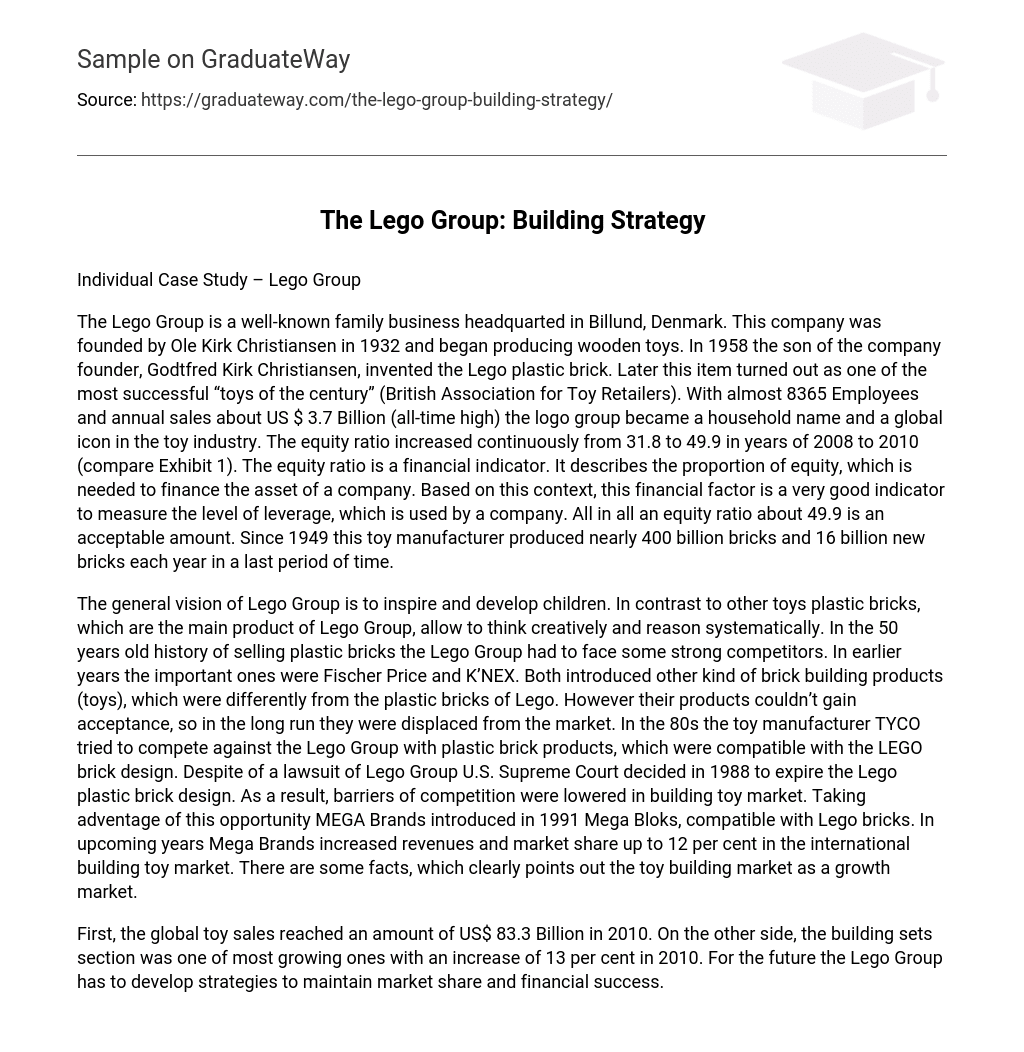Individual Case Study – Lego Group
The Lego Group is a well-known family business headquarted in Billund, Denmark. This company was founded by Ole Kirk Christiansen in 1932 and began producing wooden toys. In 1958 the son of the company founder, Godtfred Kirk Christiansen, invented the Lego plastic brick. Later this item turned out as one of the most successful “toys of the century” (British Association for Toy Retailers). With almost 8365 Employees and annual sales about US $ 3.7 Billion (all-time high) the logo group became a household name and a global icon in the toy industry. The equity ratio increased continuously from 31.8 to 49.9 in years of 2008 to 2010 (compare Exhibit 1). The equity ratio is a financial indicator. It describes the proportion of equity, which is needed to finance the asset of a company. Based on this context, this financial factor is a very good indicator to measure the level of leverage, which is used by a company. All in all an equity ratio about 49.9 is an acceptable amount. Since 1949 this toy manufacturer produced nearly 400 billion bricks and 16 billion new bricks each year in a last period of time.
The general vision of Lego Group is to inspire and develop children. In contrast to other toys plastic bricks, which are the main product of Lego Group, allow to think creatively and reason systematically. In the 50 years old history of selling plastic bricks the Lego Group had to face some strong competitors. In earlier years the important ones were Fischer Price and K’NEX. Both introduced other kind of brick building products (toys), which were differently from the plastic bricks of Lego. However their products couldn’t gain acceptance, so in the long run they were displaced from the market. In the 80s the toy manufacturer TYCO tried to compete against the Lego Group with plastic brick products, which were compatible with the LEGO brick design. Despite of a lawsuit of Lego Group U.S. Supreme Court decided in 1988 to expire the Lego plastic brick design. As a result, barriers of competition were lowered in building toy market. Taking adventage of this opportunity MEGA Brands introduced in 1991 Mega Bloks, compatible with Lego bricks. In upcoming years Mega Brands increased revenues and market share up to 12 per cent in the international building toy market. There are some facts, which clearly points out the toy building market as a growth market.
First, the global toy sales reached an amount of US$ 83.3 Billion in 2010. On the other side, the building sets section was one of most growing ones with an increase of 13 per cent in 2010. For the future the Lego Group has to develop strategies to maintain market share and financial success.





